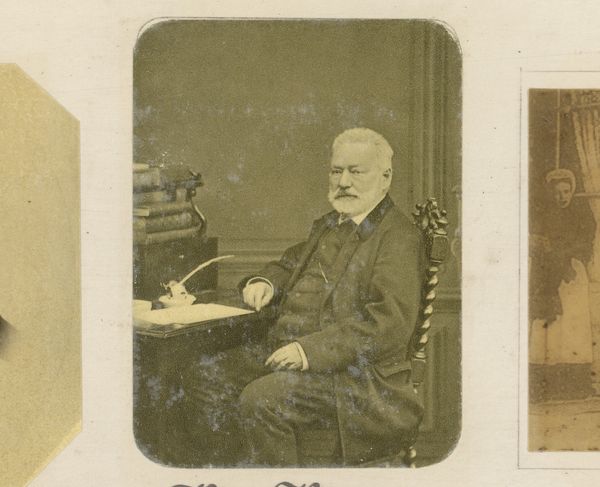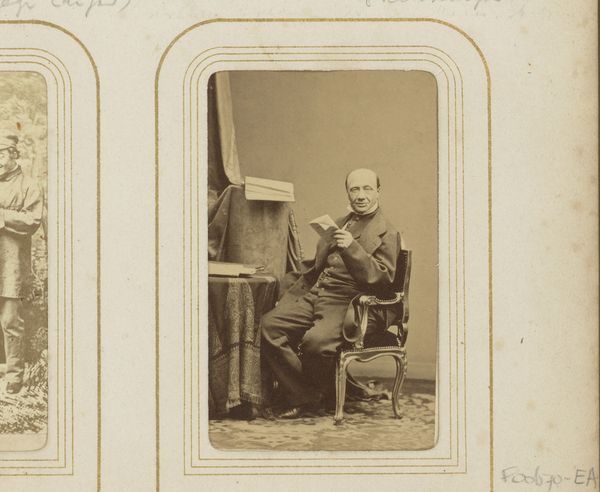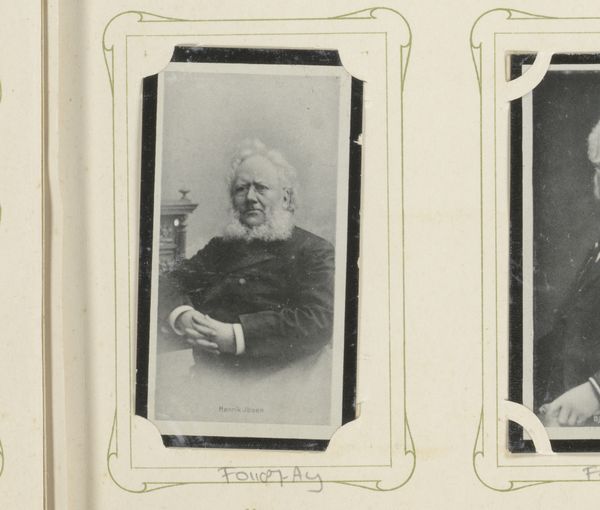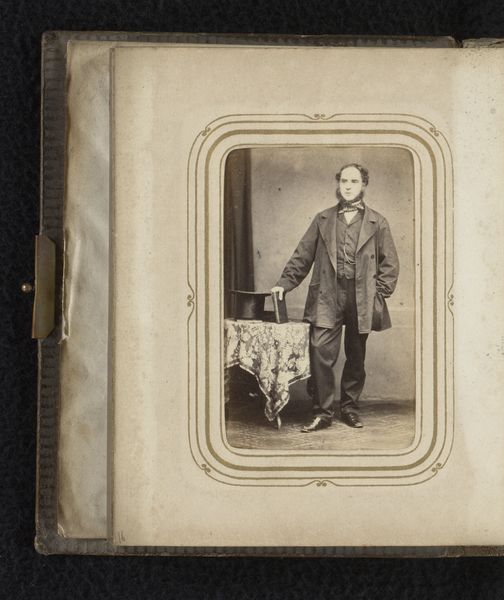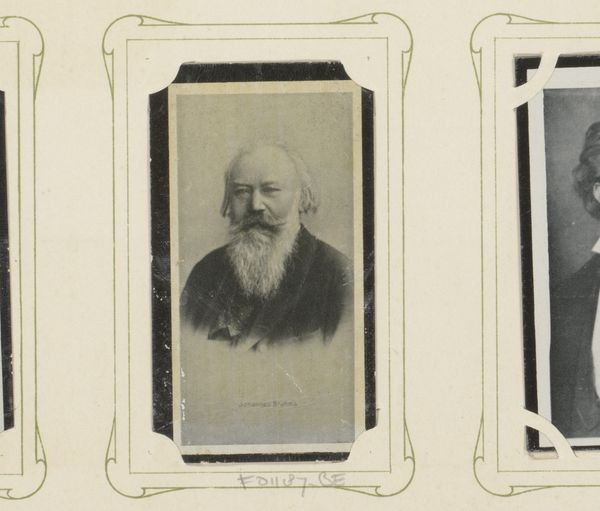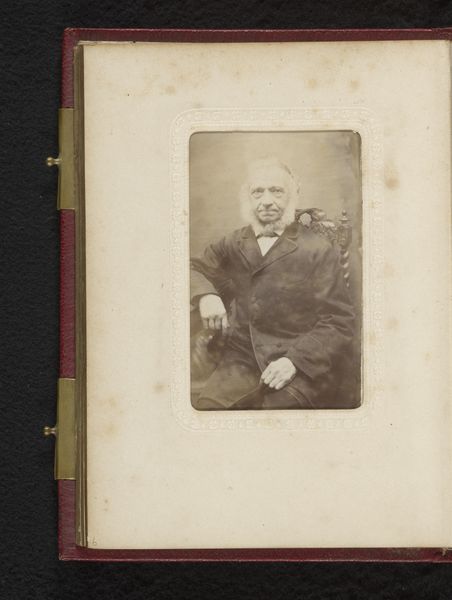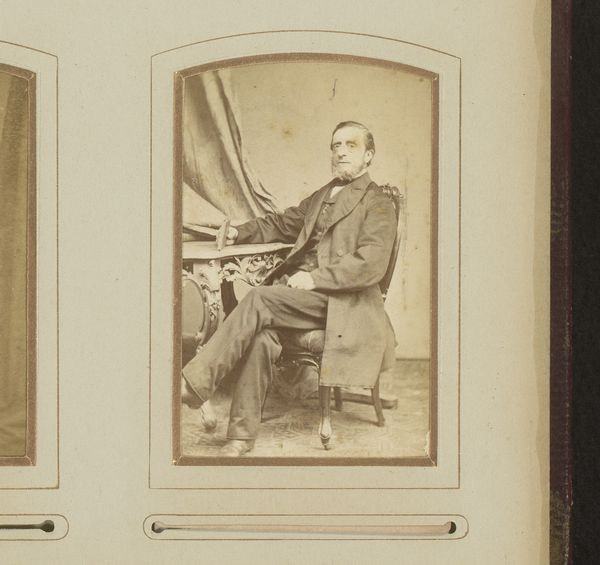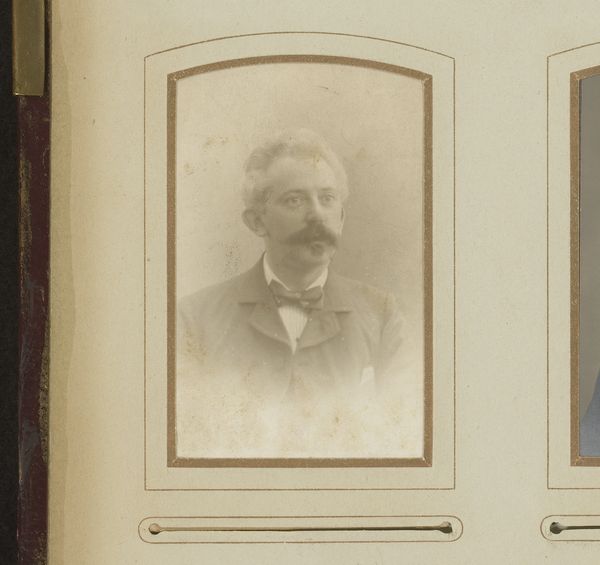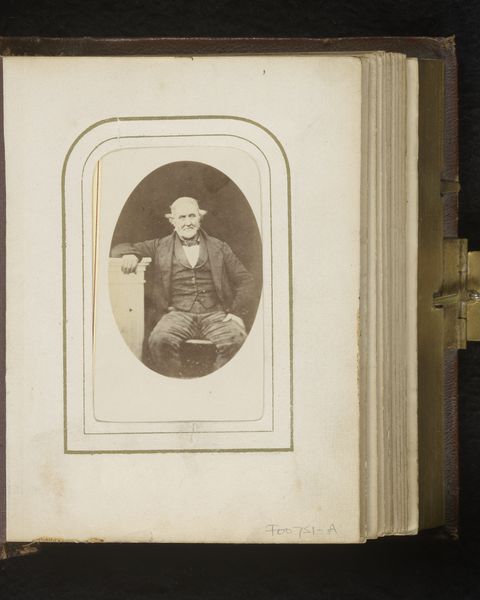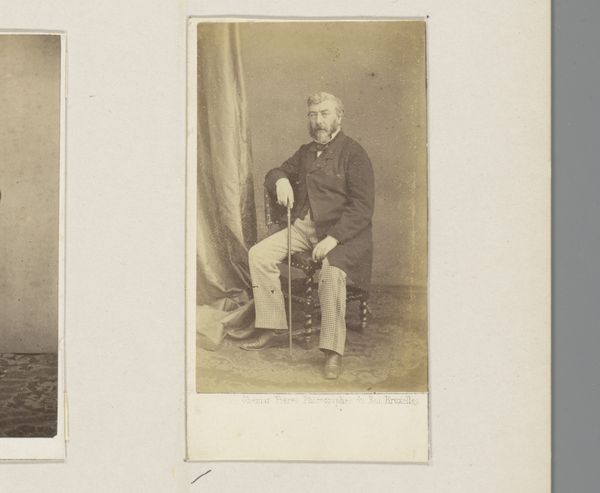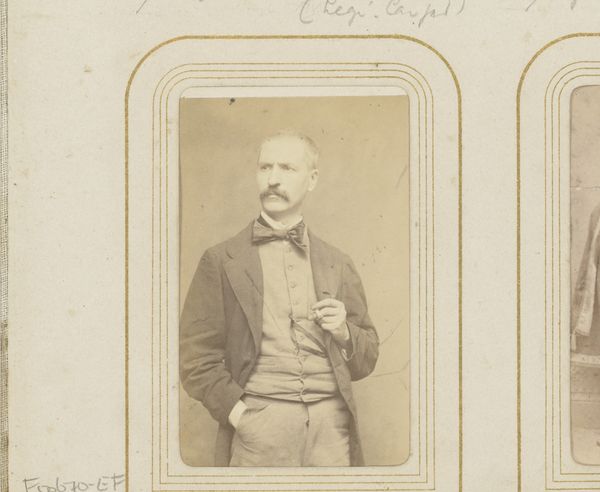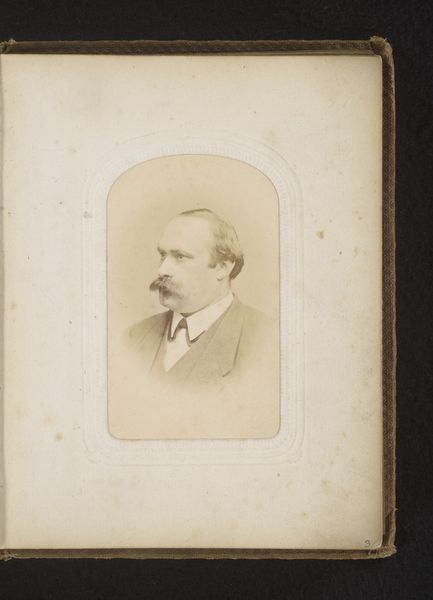
photography
#
portrait
#
photography
#
genre-painting
#
realism
Dimensions: height 82 mm, width 45 mm
Copyright: Rijks Museum: Open Domain
Curator: Up next, we have a photograph dating from around 1905-1906, "Portret van keizer Frans Jozef I van Oostenrijk"—that's "Portrait of Emperor Franz Joseph I of Austria" to those of us less linguistically blessed. Editor: My goodness, the man practically exudes weariness. Look at the slump of his shoulders, the weary set to his jaw... even through the formality, the photograph feels like an unguarded glimpse into his state of mind. Curator: Absolutely. Consider how carefully such images were controlled then. And yet, here's this incredibly human element peeking through all the regal pomp. Speaking of which, even that military jacket speaks volumes... all those decorations, weighty symbols, the man is almost drowning under the burden. It seems that portraiture here captures both a public figure and something much deeper. The use of photography brings its own unique perspective and inherent realism. Editor: I'm immediately struck by how that sense of burden— both metaphorical and quite literally material—is echoed in the construction of the image itself. It is just a print set in some ornate cardboard, right? Probably one of many ordered and handed out to loyal officials and aristocrats around the Empire. A piece of statecraft posing as private portrait. Look closely, the photograph is a rather unassuming size and clearly mass-produced. You could view it in terms of its materiality—as the very stuff of empire made mundane. Curator: Intriguing point about mass production dulling its "aura", to use Walter Benjamin's phrase. But that reproducible quality also democratized access to the Emperor’s image to a certain extent. In many ways I find that idea magical. It is both intimate and official; an intimate capturing a soul burdened by their duty and the duty to pose as the emperor to their very bones. Editor: And, conversely, it’s that supposed magic that serves the larger, decidedly un-magical purpose of statecraft. It’s a tension woven right into the very paper and ink. Still, there's a peculiar fragility here, given what would unfold a decade later with the collapse of the Austro-Hungarian Empire. These images suddenly take on an entirely new pathos—fragments from a vanished world. Curator: You are right. The burden of vanished empire and the fragility of remembrance both come to mind after our brief material and magical review. Editor: Absolutely. Next artwork please!
Comments
No comments
Be the first to comment and join the conversation on the ultimate creative platform.
